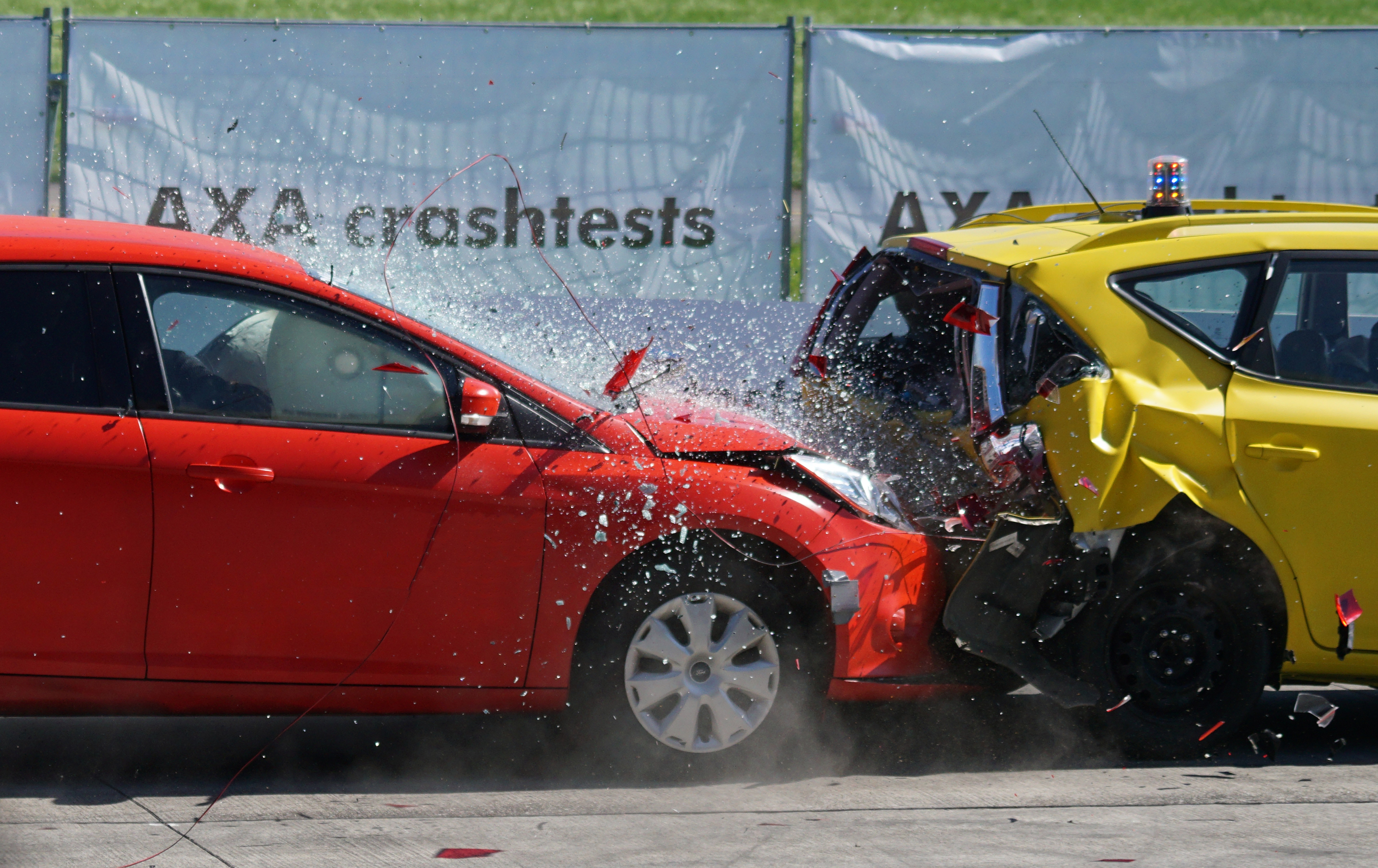Rear-End Motor Vehicle Accidents
Chances are that you’ve been involved in a rear-end collision at some point: the National Highway Traffic Safety Administration (NHTSA) says nearly one-quarter of all motor vehicle accidents involve rear-end collisions. Most of the time, getting “rear-ended” is a minor inconvenience. The impact may be jarring, but about 90% of the occupants in both the striking and struck vehicles escape without injury. In many cases, a low-speed rear-end collision doesn’t even damage the vehicles involved.
When injury does occur, it is more often to an occupant of the following vehicle — the car that struck the other vehicle — than the vehicle that was struck.
However, rear-end collisions can be serious. According to the Insurance Information Institute, in 2016 there were 2,350 fatal rear-end collisions. Rear-end collisions are particularly dangerous when a larger and heavier vehicle strikes a smaller and more vulnerable one. For example, a rear-end collision in which a semi-truck hits a passenger car is likely to cause far more damage and is more likely to result in serious injury than a car-on-car rear-end collision. Similarly, rear-end accidents are especially dangerous for motorcycle riders. That’s because even a low speed collision can knock the motorcycle over, send the rider flying off of the bike, or even result in the vehicle that struck his motorcycle hitting the rider directly.
Most people assume that the following driver–the one who strikes the other car–is legally responsible in a rear-end collision. Though it is usually true that the driver who rear-ends another car is at least partially liable for the accident, the analysis may be more complicated than you think. If you or someone you love has been seriously injured in a rear-end collision, it is in your best interest to consult an experienced car accident attorney to determine whether you may be entitled to compensation.
Why Rear-End Collisions Happen
The minor fender-benders that make up the bulk of rear-end collisions are often viewed as “just an accident.” However, as with most other motor vehicle accidents, rear-end collisions can generally be avoided. In fact, many are caused by one of a small number of negligent behaviors. These include:
- Following too closely,
- Exceeding the speed limit,
- Driving too fast for conditions (even if within the posted speed limit),
- Distracted driving, and
- Fatigued driving
On the road, you can help avoid rear-end collisions by maintaining a safe distance, adapting to weather and other potentially dangerous conditions, maintaining a safe speed, and keeping a close eye on what is happening around you. Remember that staying vigilant includes keeping an eye on your rear-view mirror. Although most people don’t realize it, an alert driver can often avoid being rear-ended.
Liability in Rear-End Collision Cases
In the vast majority of cases, the following driver is responsible in a rear-end collision. That’s because a driver who is observing the speed limit, paying attention, and allowing a safe buffer between him and the car in front of him should typically have time to slow down or stop when the driver in front of him brakes.
However, there are occasionally circumstances under which the driver whose vehicle is struck may be at least partially responsible for the accident. For example, a driver who brakes suddenly without cause in high-speed traffic might be determined to be at least partially liable for damages caused by a resulting collision. Although the driver behind him should have been maintaining a safe buffer and remaining vigilant, the dangerous behavior of the driver who braked suddenly might also be found to be a contributing factor.
In some cases, a third party may bear some or all of the responsibility. Some examples include:
- A pedestrian who darts into the road, forcing the leading driver to brake suddenly,
- Another driver behaving negligently in a way that creates or contributes to the circumstances leading to the crash, or
- The manufacturer of a vehicle or part that contributes to the accident, such as faulty brakes
Getting Help After a Rear-End Motor Vehicle Collision
If you have been rear-ended in traffic and suffered serious injuries, you may be entitled to damages. Even if your actions contributed to the accident, you may be able to recover partial compensation for your injuries.
An experienced local car accident attorney can be your best source of information about your rights and options after a rear-end collision. Attorney Kevin J. Broderick has extensive experience in helping victims of car accidents in both Massachusetts and New Hampshire. To schedule a free consultation, just dial 978-459-1792 or fill out the contact form on this site.
Have you been injured?
Let Attorney Kevin Broderick answer your questions and evaluate your personal injury or vehicle accident case for free!
CALL TODAY 978-459-3085
Kevin Broderick Law serves clients in Massachusetts and
New Hampshire.
Areas of service in
Massachusetts
Lowell
Lawrence
Littleton
Billerica
Andover
Chelmsford
Westford
Groton
Acton
Tyngsborough
Dracut
Methuen
Areas of Service in
New Hampshire
Hudson
Nashua
Pelham
Disclaimer
The information you obtain on this site is not, nor is it intended to be, legal advice. You should consult an attorney for advice regarding your individual situation. We invite you to contact us and welcome your calls, letters, and electronic mail. Contacting us does not create an attorney-client relationship. Please do not send any confidential information to us until such time as an attorney-client relationship has been established.

